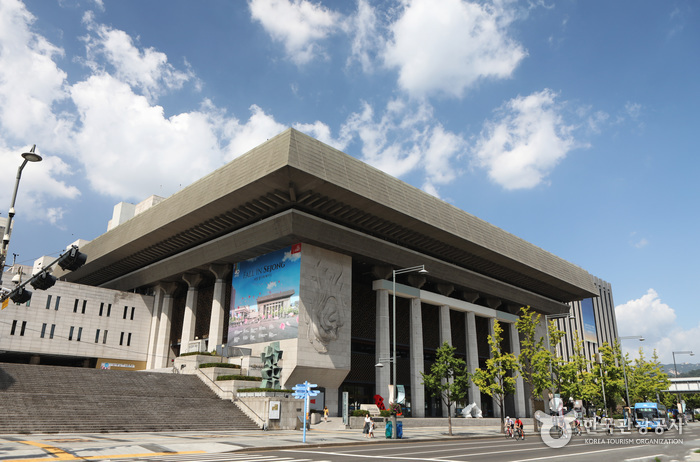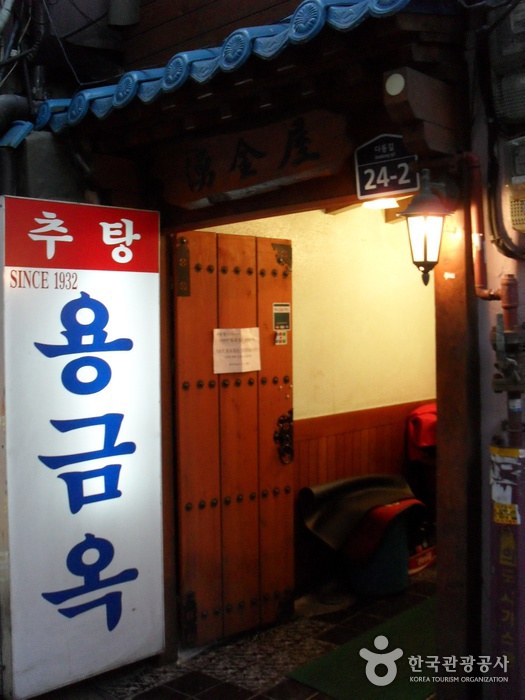Olive Young - Myeongdong Town Branch [Tax Refund Shop] (올리브영 명동 타운)
6.1Km 2024-06-26
1F~2F, 53, Myeongdong-gil, Jung-gu, Seoul
-
ABC Mart - Nowon Branch [Tax Refund Shop] (ABC마트 노원점)
6.1Km 2024-06-28
482, Nohae-ro, Nowon-gu, Seoul
-
Sejong Center (세종문화회관)
6.1Km 2023-06-14
175, Sejong-daero, Jongno-gu, Seoul
+82-2-399-1000
Sejong Center, officially known as Sejong Center for the Performing Arts, opened on July 1, 1999 to provide citizens with a cultural art space. Having completed a grand remodeling project in 2007, Sejong Center offers customer-friendly programs aimed at improving the quality of art performances in a comfortable resting area. Comprising the Grand Theater of Sejong Center, Sejong M Theater, Sejong Chamber Hall, Exhibition Hall, and other subsidiary facilities, Sejong Center is a multicultural art center.
Various genres of performances including traditional, classic, and crossover have taken place in the center, giving many opportunities for cultural nostalgia.
* Opened April 14, 1978
Hanok Guesthouse Dongchonchae (한옥 게스트하우스 동촌재)
6.1Km 2024-12-23
21-10 , Jahamun-ro 11-gil, Jongno-gu, Seoul
+82-10-8561-5227, +82-10-9127-5227
Dongchonjae is a hanok guesthouse in Seochon, Jongno, Seoul. The the Anchae(women's quarters) consists of four sleeping rooms and a cheongmaru lounge space, plus kitchen and toilet. (There are also shared toilets in the yard.) Cooking is not allowed, but guests are welcome to bring in prepared food. A free breakfast is provided. Guests can watch movies in the yard or main hall, and can use the refrigerator and washing machine. A guided night tour of Seoul City Wall is offered, as is a tea ceremony, and rice-cake making experience.
Buam-dong (부암동)
6.1Km 2024-03-15
Buam-dong, Jongno-gu, Seoul
+82-2-2148-1807
Buam-dong is a village located north of Gyeongbokgung Palace. It is designated as a development-restricted zone due to its proximity to the Cheong Wa Dae, preserving the old neighborhood's appearance. There are numerous bakeries, cafés, restaurants, and small galleries housed in renovated traditional houses, making it a delightful place for a leisurely stroll. The nearby hiking trails connected to Bugaksan Mountain offer a tranquil journey through the forest, ideal for those seeking a peaceful retreat.
Yonggeumok (용금옥)
6.1Km 2024-03-13
24-2, Dadong-gil, Jung-gu, Seoul
+82-2-777-1689
Established in 1932, Yonggeumok specializes in Seoul-style chutang (loach soup), renowned for using whole loach in its preparation. This method distinguishes it from the more commonly known Namwon-style chutang, which involves grinding the loach. At Yonggeumok, guests can savor the tender and savory texture of the loach flesh in their chutang, offering a unique and authentic dining experience.
Eun&Jeong Myeongdong Dakgalbi (은앤정명동닭갈비)
6.1Km 2024-03-11
2FL, 19, Myeongdong 7-gil, Jung-gu, Seoul
+82-2-778-1988
Situated on Myeongdong Street, Eun&Jeong Myeongdong Dakgalbi specializes in dakgalbi (spicy stir-fried chicken). They have a variety of menu options such as spicy stir-fried chicken and cheese and stir-fried chicken with garlic and soy sauce, so patrons can choose according to their preferences. In addition, rice cakes, sweet potatoes, noodles, and fried rice can be cooked together for a richer experience. In addition, customers have the option to other delectable dishes including budae jjigae (sausage jjigae), makguksu (buckwheat noodles), and samgye tang (ginseng chicken soup).
Myeongdongjeong Royal Cuisine Restaurant (명동정)
6.1Km 2024-03-12
1F, 299, Samil-daero, Jung-gu, Seoul
+82-2-3789-5132
Located on Myeongdong Street, Myeongdongjeong Royal Cuisine Restaurant serves Korean traditional dishes. They offer Korean traditional dishes that were once prepared for Korean royalty and nobility, using premium ingredients such as blue crab, abalone, beef, shrimp, and pumpkin. Their Korean table d'hote menus feature youngran sang (weekday lunch special), myeongdong jeongsik (bulgogi and other traditional dishes), gwibin sang (abalone & beef rib stew with traditional various dishes), and haesin sang (high-quality seafood dishes). With various rooms and halls, the venue also has space for organizing simple parties.
Haepungbuwongun Yun Taekyeong's Jaesil (해풍부원군윤택영댁재실)
6.1Km 2021-11-10
28, Toegye-ro 34-gil, Jung-gu, Seoul
+82-2-3396-5882
Haepungbuwongun Yun Taekyeong's Jaesil is a shrine house built by the father-in-law of King Sunjong of Joseon dynasty in 1906 when his daughter was proclaimed the crowned princess of Joseon and entered Changdeokgung Palace to later become Queen Sunjeong. Red pine trees salvaged from the demolition of Gyeongungung Palace were used to construct the house. It was originally located in Jegi-dong, Dongdaemun-gu, but was later restored and moved to its present location. The shrine of the house that was destroyed in 1960 was also restored.
Because the house is more of a shrine rather than residential living quarters, it has many unique features. For example, unlike other houses, it has the anchae (women’s quarters) located across from sarangbang (men’s quarters) with daecheong (living room) positioned between them.
Lens Town - Myeong-dong Jungang Branch [Tax Refund Shop] (렌즈타운 명동중앙점)
6.1Km 2024-04-22
1F, 49, Myeongdong-gil, Jung-gu, Seoul
-

![ABC Mart - Nowon Branch [Tax Refund Shop] (ABC마트 노원점)](http://tong.visitkorea.or.kr/cms/resource/05/3312805_image2_1.jpg)





![Lens Town - Myeong-dong Jungang Branch [Tax Refund Shop] (렌즈타운 명동중앙점)](http://tong.visitkorea.or.kr/cms/resource/23/2887923_image2_1.jpg)
 English
English
 한국어
한국어 日本語
日本語 中文(简体)
中文(简体) Deutsch
Deutsch Français
Français Español
Español Русский
Русский